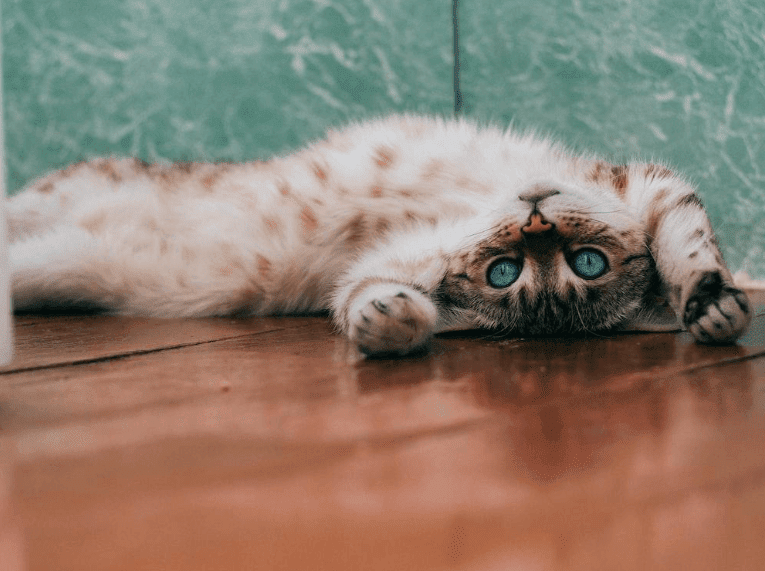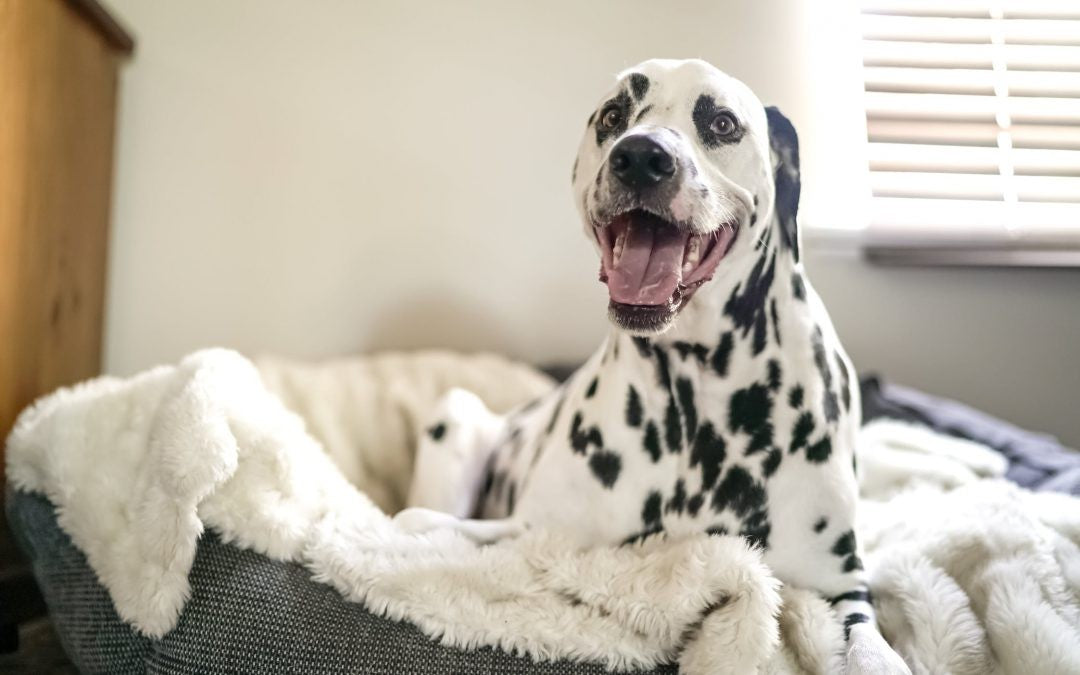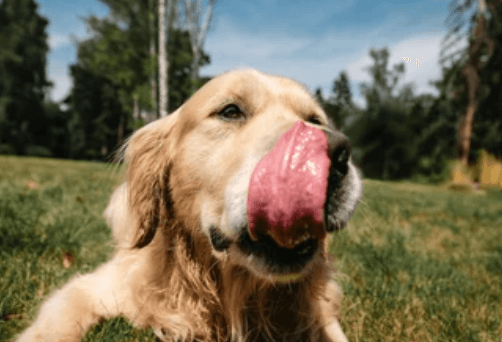She loves me, she loves me not? House cats are more social and communicative than their wild counterparts, but it still takes time and attention to get to really know and understand them. “Resting Cat Face” makes it hard for us to know what cats are thinking. Cats don’t have the amount of muscles in their little furry faces as we do nor our pups, so they are much harder to read than dogs or humans, as we are usually much more expressive in our faces. Since we cannot read their expressions, learn their cues to know, "What is My Cat Thinking?"
Table of Contents
Hello, Bonjour, Buenos Dias…
Your kitty may not speak in your native language, but it is likely you have trained them - or have they trained you? - to speak in a way you both understand. Meows have different sounds and meanings, and house cats use them to be sure to get what they want and need.
Purring for Contentment, and Other Cat Speak
Hungry kitties may lock eyes with you and loudly and repeatedly meow, saying, “Hey Human, it’s brekkie time!” If you walk by your cat while she is lying in her favorite sunny spot, a quick meow may just mean the same as a human giving a wave or saying hello. Cats like to greet their favorite people just like we like do! Kittens meow to communicate with their mama cat. Wild cats do not talk in meows like house cats, they stop after the kitten stage. House cats are much more likely to be vocal in meows since humans don’t understand their usual body language and scent communication.
Purring
Does your cat have a motor inside? A purring cat sounds and feels like a smooth vehicle engine. Kittens purr when nursing from their moms, and house cats purr when they are feeling loved and cared for, most likely when cuddling with their favorite human. In the opposite way, some cats purr when they are scared or not feeling well as a way to calm themselves down.
Trilling
Trilling, chirping, or chattering is a higher pitch sound from your kitty that sounds like a mix between a meow and a purr. Your cat may trill as a greeting to you or others, or it may happen in excitement when seeing a bird outside the window. Trilling is a happy cat sound and it makes humans feel happy to hear it.
Hissing
Hisses, snorts, and spits are not happy cat sounds. If your cat is making any of these noises, give them the space they need. They may just be angry at you or another pet, or they might be afraid and playing tough. No need for trying to figure out, "What is My Cat Thinking?" here! This is one of the behaviors to try to avoid by introducing new pets thoughtfully. Check out this article for 7 Tips for Introducing a New Kitten to Your Cat!
Yowling
Cat yowls are long, low-pitched moans that might mean they be in pain, be stuck, or need other help. They also yowl when afraid. Older cats, especially ones with hyperthyroidism or dementia, may yowl along with other symptoms of anxiety and confusion. Yowling is an unhappy sound to not ignore.
Cats yowling due to hyperthyroidism need to be cared for in order for the disease to not get worse. BestLife4Pets' Cat Weight Gain + Hyperthyroidism Treatment will help cats to regain a healthy functioning thyroid. You'll notice they seem calmer, are drinking less, are back to a healthy weight, and will stop waking you up at night crying and yowling. With a healthy functioning thyroid, your kitties will revert to their former energy, and their fur will shine.
Cats that yowl often for anxiety or aggression reasons may be helped with our BestLife4Pets Peaceful Paws Remedy, formulated with homeopathic ingredients and flower remedies to safely and naturally help calm your kitty.
The Importance of Body Language
Cats may seem independent, and compared to many other pets and people, they are able to take care of themselves. But house cats especially are trying to talk to you in their own special way, and they might be sad if you don’t know what they want and need. Cats don’t show emotion the way dogs do. They show their feelings through how they act, through body language helping your to know, "What is My Cat Thinking?".
Eye Signals
A cat’s eyes are a window to their soul. Cats use their eyes to show their thoughts and needs.
- Slow Blinking: When your kitty stares into your eyes and blinks their eyes slowly, shows that they love and trust you. In the wild, animals have to be on their guard at all times. Slowly blinking means they’re not paying attention to their surroundings, which shows that they trust you to keep them safe.
- Half-Closed: If your cat’s eyes are half-closed, they are relaxing or trusting you. This shows your cat’s feels secure.
- Eye Contact with a Nose Kiss: A nose kiss - when a cat touches their nose to yours - is a sweet sign of their love and trust for you. No Blinking: When your cat is focused on something or someone in their surroundings, they will stare with unblinking eyes. They may also mean your cat is sensing a threat.
- Dilated or Constricted Pupils: When a cat's pupils are big (dilated) or small (constricted), it means different things. Cats might feel curious, surprised, scared, or excited when their eyes look like this. Sometimes, if a cat's pupils are big or small, it could mean the cat isn't feeling well.
Ear Cues
Cats have 32 muscles in each ear! Their incredible ears help them to hear sounds we cannot, and move them in independent directions. They are able to move their ears 180 degrees. Your cat’s ear position will tell you a lot about what your cat is thinking.
- Up: A cat with ears up and curious and looking for the sound they heard.
- Forward: When the ears are forward, your cat is happy and relaxed.
- Back or sideways: A cat with the ears back is on high alert, and may become aggressive or run away.
- Out and low: Cats that have their ears pointing outwards and low may not be feeling well. Be sure to watch them carefully for other possible symptoms of sickness like not eating or drinking.
- Twitching: the sensitive hearing of your cat may cause their ears to rotate fast and twitch when they hear a sound they want to figure out quickly.
Tail Talk
Those furry pretty tails tell us a lot about the thoughts of a cat, and are used to communicate in many different ways.
- Straight Up: If your cat’s tail is straight up, maybe with a hook at the end, it shows they are happy.
- Flicking: If your cat is lying down and flicking their tail, they are content and happy.
- Puffed Up: If your cat’s tail faces down or puffs up, it may be a sign of your cat feeling threatened or scared.
- Swishing: A fast back and forth tail show the cat is annoyed and wants to be left alone.
Posture and Movements
- Zoomies: If your cat is running around like a crazy pet, this is a great way to know they are playful and healthy.
- Headbutting: Cats communicate with other cats through spreading their scent, and a good headbutt from kitty means they are marking you as theirs.
- Rigid or Stiff Body: If your cat’s body is rigid, it’s a sign that it is angry.
- Pacing: Cat pacing might be how they show discomfort, anxiety, boredom, or sickness.
- Arched Back: An arched back shows that a cat feels threatened.
Cats May Not Tell You How They Feel, But They Will Show You!
If you have a new cat to love in your house, they will need time to get used to their new home. Our Guide to Adopting an Adult Cat is a great resource to help with a smooth transition. Certainly pay attention to what they show you through their actions and meows, but their true feelings and personality may take more time to show. Figuring out if your cat is feeling sick, threatened, anxious, or bored is much easier when you know how to answer the question, “What is my cat thinking?”.



